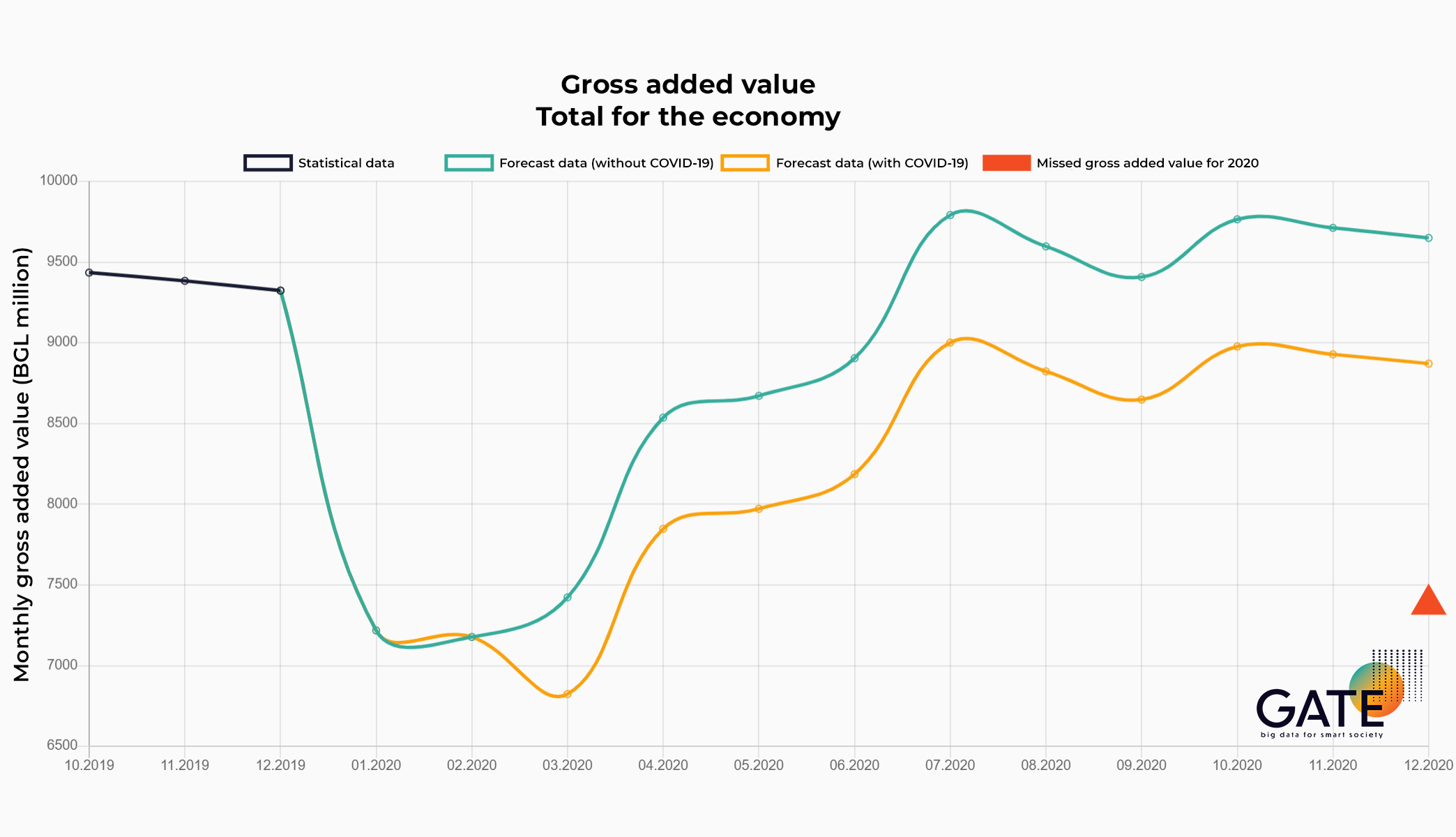GATE institute creates a platform for research and analysis of the economy during and after the COVID-19 pandemic
The "Big Data for Smart Society" - GATE Institute, creates the first-of-its-kind platform COVID-19 Activity Tracker (CAT), which processes and presents empirical information on the business of individual industries and the economy as a whole, based on constraints imposed on the human factor.
This is performed in a way that allows stakeholders to decide on their own or joint post-crisis recovery actions.
The CAT platform is developed at the GATE Institute of Sofia University "St. Kliment Ohridski”, coordinated by prof. Silvia Ilieva and an interdisciplinary team, including some of the best economic analysts in Bulgaria - assoc. prof. Dr. Krasen Stanchev from Sofia University, Department of Public Administration, Chairman of the Board of the Institute for Market Economics (IME), GATE CAT Development Manager; Dr. Krassimir Lakov (analyst and economist); Dr. Evgeni Raykov from the University of National and World Economy (UNWE), Department of Finance (analyst); researcher Dimitar Chobanov (analyst), Institute of Economics and Policy at the University of National and World Economy; and Dr. Valentin Pavlov, Head of Technical implementation.
"As an institute with the main mission to provide solutions based on Big Data and Artificial Intelligence, we have built a platform to process and present empirical public information from various institutional organizations. On this basis, our team of economic analysts provide forecast assessments by industry, which in turn can help the decision-making of government and businesses being aware of the current situation and in the long run." explained prof. Silvia Ilieva, Director of GATE Institute. "Our goal is to provide a tool for stakeholders by providing assessments information that would help them to take certain steps for investment and recovery after the economic crisis."
The methodology is classical and represents an interface between micro and macro economic indicators, including fiscal ones, based on employment and added value, and modified to work for the current and atypical picture, resulting from blocked human activities.
Such classical methods of analysis and forecasting are based on the contributions of a number of Nobel laureates (Kuznets, Hayek, Smith and Phelps) and are used by international financial institutions such as Eurostat, the OECD and the NSI. As the methodology will change due to the change of the current situation and the pace of recovery, it is assumed that there will be further differences. The work of prof. Dr. Friedrich Baurzax, who was the creator of business tracking methods and an associate of IME from 1997 to 2003, was used, as well as the recent applications of these methodologies by IME.
The quantitative information is related to parameters of economic development for (at least) a year before the pandemic; the starting indicators for tracking the dynamics are derived from them. The qualitative data is based on the evaluation of reference data, and the current forecast depends on the changes in statistics on what is happening in a given industry and in politics and economy, in general.
"Thanks to the information gathered, we can provide assessments and forecasts for market behavior and development. Based on this perspective, the government and individual businesses will have a forward-looking and a long-term picture that can help them make decisions by industries and incomes, including at macro level for some industries, and on the basis of verifiable expectations for economic recovery. The advantage of the platform and evaluations is the empirical basis of monitoring and analysis. The latter provide information and an opportunity for timely updating of the data, which is announced by institutions, government and/or guilds and think-tanks", adds Dr. Krasen Stanchev.
The first topic and analysis that GATE CAT platform performs is about unemployment. Given the current dynamics, the picture for 2020 is as follows: doubling of unemployment, falling GDP over 7%, negative fiscal effect - over BGN 2 billion. The starting point for calculating the indicators is March 2020. They report unregistered employment by industries and the activities of people who work for themselves. The daily indicator is employment, respectively unemployment. It gives a snapshot of the state of the economy in almost real time. Its monitoring allows the assessment of fiscal and macroeconomic effects.
When compiling the recovery scenarios, five-year averages were taken into account. The behavior of the economy with and without COVID-19 makes it possible to develop solutions and strategies both at company and at general economic level.

The number of those affected by the crisis is projected to be 1 million people, about 34% of the total employed (by the end of 2019). The forecast is that the decline in employment will not be overcome at least until the beginning of 2021.
Forecast data as of December 2020 show the following - number of employees: 899,931 people, number of unemployed: 157,842 people, unproduced gross added value - BGN 7.739 billion and total annual fiscal effect: BGN 2.088 billion. Data from the 16 currently most affected sectors are analyzed. This includes culture, sports and entertainment; real estate operations; professional activities, consultancy and research; IT; hotels and restaurants; air and land transport; trade in non-food goods; cars and repairs; manufacture of machinery and equipment; production of chemical products; textiles; warehousing and cargo; construction; furniture manufacturing; agriculture, forestry and fisheries; mining and processing industry; production of electricity and heat; water supply; information and creative products and telecommunications; financial and insurance activities; administrative and support service activities; government; education; human health and social work.
Enriching the available data will add new industries as well as indirect and induced effects on the economy and the fiscal system.